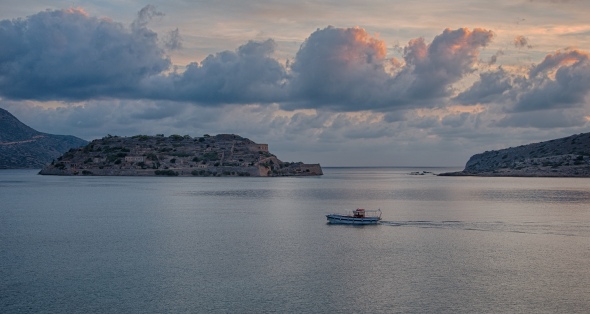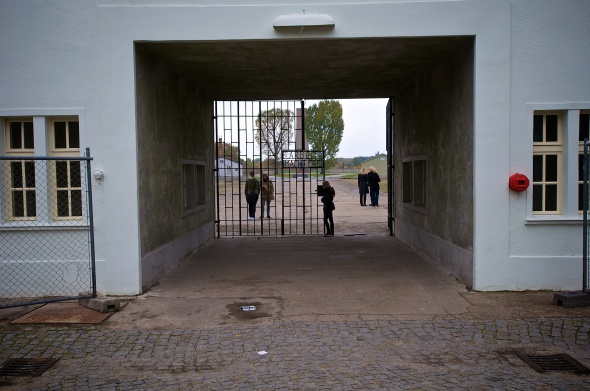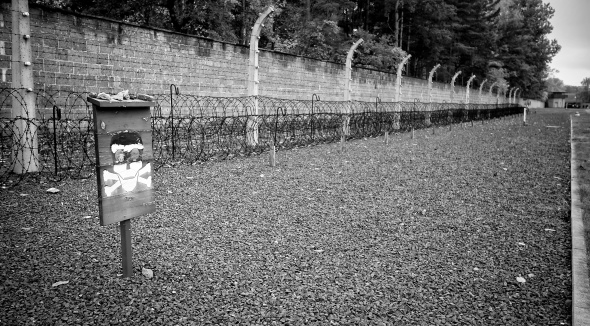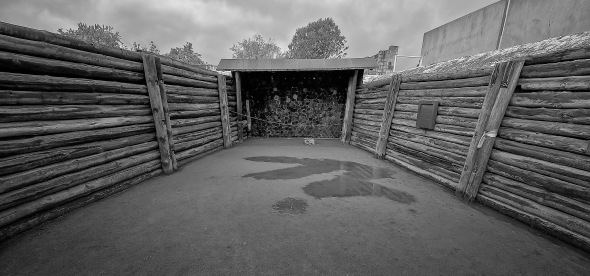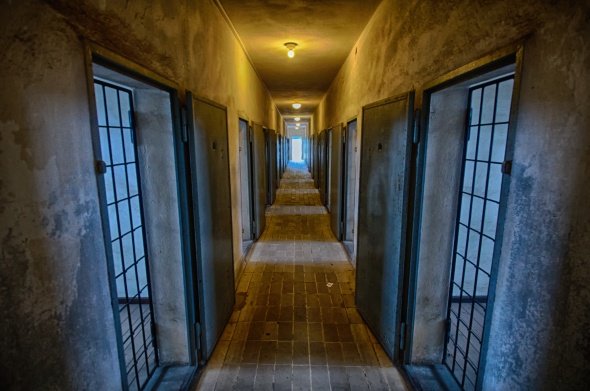Caïque Boat at Sunrise – Crete, Greece
Caïque Passing Spinalonga as Sunrise
Fall 2015 brings us to the Greek island of Crete. The tranquility of a cool sunrise is broken by the slow puttering of a traditional Caïque Greek fishing boat as it passes between the mainland town of Plaka and the island of Spinalonga in the Gulf of Elounda in north-eastern Crete.
New York, New York
 Top of the Rock
Top of the Rock
Next pic series is from a 2015 visit to NY, NY. We start with the view from the top of Rockefeller Plaza looking south over Manhattan.
Tower Bridge from Tower of London
 View Across the Thames
View Across the Thames
The Tower of London (“Her Majesty’s Royal Palace and Fortress of the Tower of London“), located on the banks of the river Thames in central London, was first built in 1066 as part of the Norman conquest of England, the 11th-century invasion and occupation of England by Norman, Breton, and French soldiers led by Duke William II (William the Conqueror) of Normandy.
The White Tower, which gives the entire castle its name, was built by William in 1078, and was a resented symbol of oppression by the new ruling elite. Throughout the centuries the castle had been besieged multiple times, as controlling it was critical to controlling the country.
This view from outside the White Tower shows the Tower Bridge, a combined draw bridge and suspension bridge across the Thames which was built in 1886–1894.
London Underground
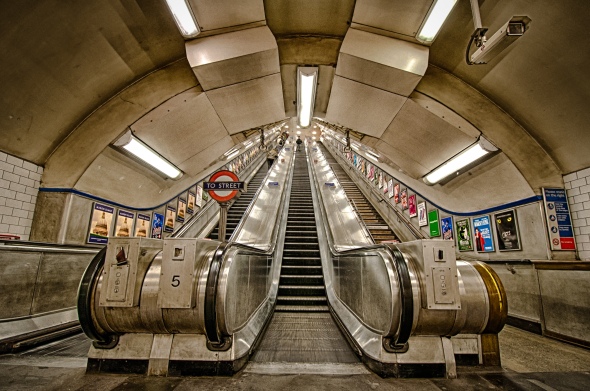 “The Tube”
“The Tube”
Wide angle shot of the London Underground (aka the Tube), which was the world’s first underground railway, opened in 1863. The nickname “The Tube” comes from the small, roughly circular tunnels which were dug to lay the tracks.
Elizabeth Tower (Big Ben)
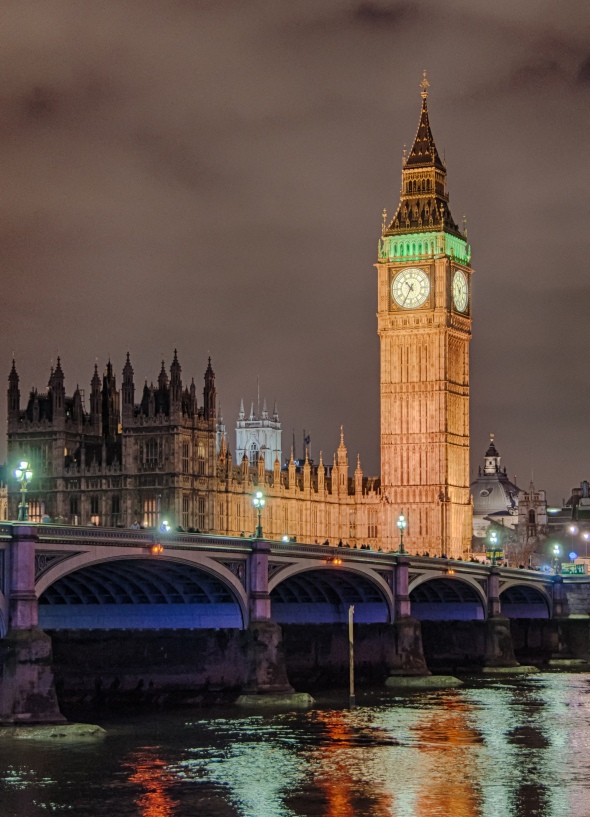 Palace of Westminster
Palace of Westminster
The Palace of Westminster, meeting place Parliament of the United Kingdom. The palace was built in the eleventh century. Most of the original medieval structures were destroyed in fires. The current design was by architect Charles Barry, in the English Perpendicular Gothic style of the 14th-16th centuries. Can you see Big Ben? No You can’t! Big Ben is the BELL in the tower, not the tower…the tower is called ” Elizabeth Tower”, named in 2012 to celebrate the Diamond Jubilee of Elizabeth II (previously just called the Clock Tower).
Hafenkran (Harbour Crane), Zürich, Switzerland
Hafenkran
The Zurich Transit Maritime Art installation “Hafenkran” (harbour crane), was a 90 ton rusting crane which operated for more the 50 years in the port of Rostock in northern Germany, was installed from 2014-2015 on the banks of the river Limmat in Zurich. Its purpose was to “bring a feeling of the sea – and a sense of freedom – to landlocked Zurich”. Is (was) it art? Still being debated.
Oepfelchammer, Zürich
 Oldest, originally preserved wine tavern in Zürich.
Oldest, originally preserved wine tavern in Zürich.
The original building was built in 1357 as a patrician house (noble medieval citizen), and didn’t see commercial activity until the 17th century, when a bakery was built. Various families operated bakeries there until 1801, when baker Hans Kaspar Denzl got a pub-license and added this wine tavern.
The tavern soon became a hotspot for intellectuals, poets, craftsmen, city officials, artists, and students to meet and discuss politics and religion during all night wine-fueled animated debates. This was once a haunt of Gottfried Keller, a 19th-century novelist and poet and one of Zurich’s most famous names.
House rules state that if you are able to climb into the rafters, span two rafters, and, while hanging upside down, can drink a glass of wine without spilling a drop, then you too may carve your initials into the rafters. I haven’t tried (yet).
Dusk and Reflections on Lake Hallstatt
 Lake Hallstatt, Austria
Lake Hallstatt, Austria
This is my parting shot of my series on the charming and photogenic village of Hallstatt, Austria. There is no more tranquil and idyllic setting to share good times (and cold beers) with lifelong best friends!
Hallstatt Austria from the Salt Mines
 Alpine Panorama
Alpine Panorama
This is the breathtaking view of Hallstatt, Lake Hallstatt, and the surrounding Austrian Alps as seen from the nearby entrance to the oldest salt mines in the world. From this view it is easy to understand why before 1900 Hallstatt, one of the first regions of human settlement, was only accessible by boat or narrow trail.
Hallstatt, Austria
Picturesque Alpine Village and UNESCO heritage site
Hallstatt is an idyllic and unbelievably charming Austrian village in the Salzkammergut region of Austria. This tiny town consists of traditional 16th-century alpine homes built on a narrow strip of land nestled between the adjacent towering Alps and the beautifully tranquil Lake Hallstatt.
Hallstatt is known for its salt mines, which are the oldest in the world and date back to prehistoric times. The mines have been worked since the Neolithic period (Late Stone age, 7 to 10 thousand years ago!), and flourished during the Bronze and Iron ages. The early Iron age is actually known as The Hallstatt Period (800 to 400 BC) in Europe.
Hallstatt is so spectacular that in 2012 a Chinese mining company built a $940 million “clone” of Hallstatt in the Guangdong region of Southern China. I hear that the views through the smoggy Chinese industrial heartland are not quite as spectacular as the original.
Oude Kerk, Amsterdam
Vater-Müller organ, Oude Kerk Amsterdam
The Oude Kerk (“old church”) is the oldest building in Amsterdam, founded 1213 (>800 year old!) and consecrated in 1306. The wooden roof is the largest medieval wooden vault in Europe, and the Estonian planks (1390) claim some of the best acoustics in Europe. Rembrandt was a parishioner the Oude Kerk, his children were all baptized here, and his wife was buried here in 1642. It is the only building in Amsterdam that remains in its original state since Rembrandt walked its halls.
Above is the Vater-Müller organ, built in 1724 and regarded as one of the finest Baroque organs in Europe. It was acknowledged by the church Commissioners as “perfect.” Click here to see an interesting demonstration of the organ accompanied by a Taiko, a traditional Japanese drum.
German WWII Atlantikwall Pillbox
Nazi Pillbox, Scheveningen Beach, The Hague, Netherlands
When I was a kid living in Holland in ’75 and ’76 I used to ride my bike to the beach (Scheveningen Beach) with my brother Mike and our friends. Near the end of the ride we passed through extensive sand dunes before we reached the North Sea. At the periphery of the dunes we passed these Nazi German R671 Pillboxes, which are remnants of the German Atlantikwall heavy artillery defense system.
The Atlantikwall was an extensive system of costal defense fortifications built by Hitler and Nazi Germany between 1942 and 1944 along the coast of Europe and Scandinavia which included trenches, gun positions, colossal coastal guns, and thousands of German troops stationed to protect against the anticipated Allied invasion of WWII. They are part of a last generation of static defences built on such a large scale.
In writing this entry I came across a website that visually depicts the Third Reich’s massive defensive line established on the European Western coast. Of special interest to me were the photographs of the intricate tunnel systems built beneath these very structures on this small section of the Dutch coast. I highly encourage you to explore this link (Bunkersite.com) and visit the tunnels and trenches under this and other beaches as well as descriptions of other components of the Third Reich’s Atlantikwall. Start with the gray links on the left of the page. This photo is from my 2014 visit back to Holland.
The Zuiderkerk, Amsterdam (Looking up the Groenburgwal)

Built 1603-1611, the Zuiderkerk (Southern Church) is a 17th-century Dutch Renaissance design Protestant church in the Nieuwmarkt area of Amsterdam. The church bells date back to 1658, and are still rung once a week.
It was rumored that Rembrandt painted his famous Night Watch in the church because his nearby studio and home was too small (likely untrue), however three of his children are buried here.
The French Impressionist painter Claude Monet painted his famous “The Zuiderkerk, Amsterdam (Looking up the Groenburgwal)” from this very location in 1874.
Magere Brug (“Skinny Bridge”), Amsterdam
Magere Brug (“Skinny Bridge”) over Amstel River, Amsterdam.
The first bridge at this site was built in 1691, with various replacements over the years. Once too narrow for two pedestrians to pass, hence the name, it was eventually widened in 1871. Local legend says the bridge was named after the magere zussen (skinny sisters), who lived on opposite sides of the river and had it built to make it easier to visit one another.
Garajonay
Garajonay
Garajonay National Park, in the center of the island of La Gomera, one of the Canary Islands (Spain). It was declared a national park in 1981 and a World Heritage Site by UNESCO in 1986
The park provides the best example of Canarian laurisilva, a humid subtropical forest that 66 million to 2.58 million years ago covered almost all of Southern Europe.
Sachsenhausen Concentration Camp, 30 km North of Berlin
“Work Makes You Free”
Sachsenhausen was a Nazi concentration camp 30 km north of Berlin and was used from 1936 to the end of the Third Reich in 1945. Its close proximity to the capital gave it special status as the place to train camp guards and test new procedures. It was designed as a model camp and became one of the most notorious concentration camps of the Third Reich. It was also the site of the Third Reich’s massive counterfeiting operation, Operation Bernhard, in which inmates artisans were forced to produce forged American and British currency. This was one of the largest counterfeiting operations in history and was designed to undermine the British and United States’ economies during the war. Operation Bernhard was depicted in the Oscar-winning 2007 movie The Counterfeiters. Visiting this camp has the most gut wrenching rip at the soul and it is almost unbearable to bear witness to the absolute atrocities that were committed during this horrible era of the Third Reich.
Prisoner’s entrance, “Tower A”
Death Strip
There were few successful escapes. The perimeter consisted of a 3m high wall. Within that there was a space that was patrolled by guards and dogs. This was bordered on the inside by a lethal electric fence; inside that was a gravel “death strip” forbidden to the prisoners. Any prisoner venturing onto the “death strip” would be shot by the guards without warning. Rewards such as extra leave were offered to guards who successfully shot and killed any prisoner who entered onto the death zone. Ultimately, too many prisoners decided to “escape” by suicide by stepping into the “death strip”, so the guards were then ordered to “shot to maim” rather than “shoot to kill”. The maimed were then further tortured.
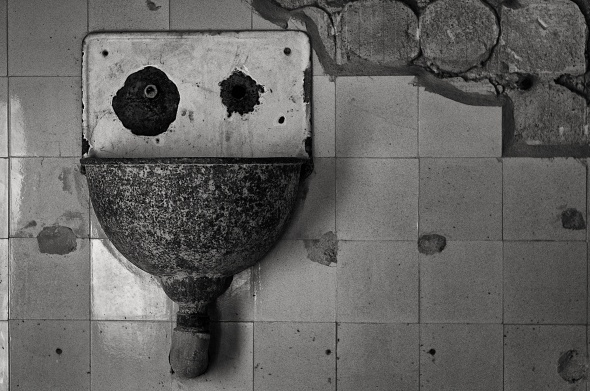 Sink in the Pathology Building and Cellar Mortuary.
Sink in the Pathology Building and Cellar Mortuary.
Used mostly but not exclusively for execution by gunfire of prisoners sentenced to death by the National Socialist courts. This was also the site of a gallows that could hang three people at a time.
Crematorium Oven
Prison Building
The Prison Building within the camp was built in 1936 and was used as a prison and by the gestapo for additional purposes. The prison was a place of secrets, abuse, and murder. The SS used the building to house camp prisoners but also other special prisoners sent from outside of the camp that the SS wished to isolate.
Ghost Stations of East Berlin
Ghost Stations of Berlin.
The Berlin Wall, constructed in August 1961, divided not only the city of Berlin into East and West, but also many of the underground U- and S- Bahn subway lines. While many of these lines now simply stopped at the borders, other lines which were primarily in the West now passed through a short segment of East Berlin. These lines remained open to the West Berliners, however they no longer stopped in East Berlin. They did, however, need to slow to a crawl as they passed through the now “Ghost Stations” (Geisterbahnhöfe) of East Berlin. Passengers would now pass through spooky, dimly lit, abandoned stations that were heavily guarded by East German guards who watched them slowly pass.
These stations were reopened in 1989 after the fall of the Wall. Entering the stations in ’89 (and now) was like stepping into a time machine and entering Cold War-era East Berlin, with the stations looking like they did when constructed in 1931 with original ads and signage as well as old green drab tiles on the walls. Most have now been totally refurbished. This shot was taken in the Alexanderplatz station in 2013.
Memorial to the Murdered Jews of Europe, Berlin
Memorial to the Murdered Jews of Europe, Berlin
Consisting of 2,711 gravestone-like pillars ranging in height from 0.2 to 4.8 m (7.9 in to 15 ft 9.0 in) and arranged in a grid pattern on a sloping field, this memorial was completed in 2005 and was the first formal German government-sponsored Holocaust memorial. Maintaining the word “murdered” in the title was intentional, as Germany as a nation was finally officially admitting to a crime.
There is no intended meaning. Instead, the memorial was designed to instill in the viewer a confusing and uneasy feeling. Is it a labyrinth? a symbolic cemetery? It’s up to the you to derive the meaning while pondering this horrible chapter in human history.
Autumn at The Brandenberg Gate, Berlin
Autumn at The Brandenberg Gate, Berlin
The Brandenburg Gate (1791), is an 18th-century neoclassical triumphal arch and the grandest and last survivor of the 14 original arches of Berlins Old City Wall. It is crowned with a four Horse chariot with the Goddess of Peace at the reins. During its existence, it has often been a site for major historical events
When the Nazis ascended to power, they used the gate as a party symbol. The gate was heavily damaged during World War II and was one of the last structures still standing in the Pariser Platz in 1945.
Traffic passed freely through the gate until the Berlin Wall was built Aug 1961. During post-war Partition of Germany, the now East Berlin gate was isolated and inaccessible adjacent to the Berlin Wall. In June of 1987, Ronald Reagan gave a speech at the Brandenberg Gate and challenged Soviet leader Mikhail Gorbachev to “Tear down this wall!”
When the Revolutions of 1989 occurred and the Berlin Wall fell Nov,1989, the gate symbolized freedom and the desire to unify Berlin. Thousands gathered there to celebrate its fall. Today it is considered a symbol of the tumultuous history of Europe and Germany, but also of European unity and peace.
Autumn at the Reichstag Building, Berlin
Autumn at the Reichstag Building, Berlin
The Reichstag Building opened in 1894 as the house of the German Parliment. The building was nearly burned to the ground in 1933 by arsonists, an event that the Nazi party used as evidence that communists were conspiring against the German Government. Adolf Hitler, then the Chancellor of Germany, used this to convince the German President to pass an emergency decree suspending all civil liberties of the German people, ultimately leading to the consolidation of power by Hitler and the Nazi party. Many believe that Hitler himself orchestrated the blaze.
Sunrise Over the Charles Bridge, Prague
Motherland Tour II/ Czech Republic
(click here to redirect to stop #1)
Sunrise Over the Charles Bridge, Prague.
Time to wrap up the Motherland Tour with my favorite 2 shots from the journey. Sunrise over The Charles Bridge is my second favorite. This was an interesting shoot..super early, and I was one of about 8 other photographers lined up at this very spot waiting for the perfect capture. It was also a pleasant surprise to see the bridge totally void of all tourists and venders…very peaceful, as was the stroll back to the flat through the empty early morning streets.
Choir and Apse, St Nicholas Cathedral – Prague, Czech Republic.
Motherland Tour II/ Czech Republic
(click here to redirect to stop #1)
St Nicholas Choir and Apse, Prague, Czech Republic.
The Church of St Nicholas is a excellent example of High Baroque architecture. Built between 1704-1755, it is one of the most valuable Baroque buildings north of the Alps. Three generations of great Baroque architects – father, son and son-in-law – worked on the church: Kryštof Dientzenhofer, Kilián Ignác Dientzenhofer and Anselmo Lurago. The Baroque organs have over 4,000 pipes up to six metres in length and were played by Mozart in 1787. Mozart’s spectacular masterpiece, Mass in C, was first performed in the Church of Saint Nicholas shortly after his visit.
Baroque was a period of artistic style that was popular during the High and Late Middle Ages (15th- 17th centuries) and is characterized by drama, rich color, and dramatic contrast between light and shadow. It used exaggerated motion and clear, easily interpreted detail to produce drama, tension, exuberance, and grandeur in sculpture, painting, architecture, literature, dance, theater, and music.
Baroque vs Gothic:
Compare this image to my last post, St Vitus Cathedral Choir and Apse, which is a Late Gothic Cathedral (started in 1344) . This style of architecture flourished during the High and Late medieval period (11th – 14th centuries), and incorporated soaring towers, spires, ribbed vaults, and flying buttresses which enabled the use of thinner walls and larger windows than previously feasible during the Romanesque architecture of the early middle ages.
Which style do you prefer?
Choir and Apse, St Vitus Cathedral – Prague, Czech Republic.
St Vitus Cathedral: Choir, Apse – Prague, Czech Republic
Motherland Tour II/ Czech Republic
St Vitus Choir and Apse, Prague, Czech Republic.
Roman Catholic Gothic Cathedral was founded on 21 November 1344 . This cathedral is an excellent example of Gothic architecture and is the biggest and most important church in the country. Located within Prague Castle , it contains the tombs of many Bohemian kings and Holy Roman Emperors.

